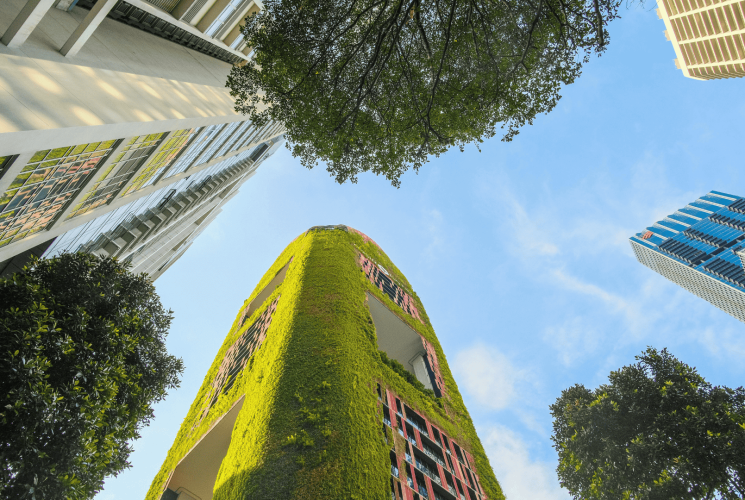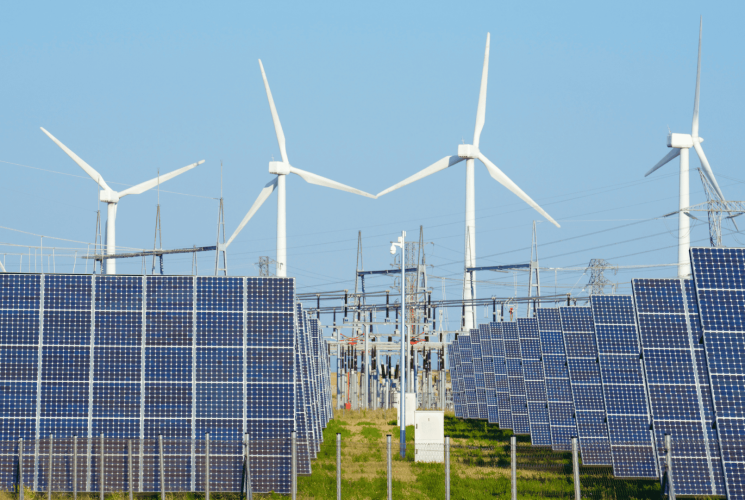How does remote work impact the environment?

Ever since the first quarter of 2020, remote work trends and expectations have changed. The world has seen significant social, economic and cultural shifts on a number of levels, including in the workplace. When the global population was asked to work from home where possible, we inadvertently began the largest work from home experiment the world has ever seen.
As we emerge from the other side of the pandemic, one thing is clear: remote work is here to stay. Globally, the demand for remote and hybrid work continues to soar. It presents people with the opportunity to work in a way that makes them healthier and happier, striking a mindful balance on where and when they work, and how often they travel. According to a survey in 2021 by the Royal Society for Public Health, 45% of people found working from home was better for their health and wellbeing, compared to around one third (29%) who thought working from home was worse for their health and wellbeing.
McKinsey Global Institute has identified that up to 20% of the global workforce has the potential to be able to work remotely three to five days a week as effectively as they could if working from an office. If the take-up of remote work was to reach that level, that would mean three to four times as many people working from home than before the pandemic – which would have a huge impact on economies, infrastructure, transportation, and consumer spending, among other things.
But as more and more companies adopt a hybrid work model, we also can’t ignore that this shift is happening during a climate emergency. Working from home has an impact on how we travel, the waste we produce and the energy we consume. How might this shift be affecting the environment? We could assume – given our not-too-distant lockdown memories of silent streets in rush hour, and improved air quality – that remote work is fundamentally better for the environment. However, the true impact of such radical behavioural shifts still remains unclear.
Reduced Cardboard and Plastic Waste
It is difficult to compare the amount of plastic and cardboard waste produced working in an office versus working from home, as it hugely depends on a person’s individual habits. However, generally speaking, eating patterns at home are likely to be more stable than eating at the office or eating out. Remote workers are more likely to make coffee in their own cups and prepare their own lunch at home, and so may find themselves less reliant on single-use plastic and packaging.
During the lockdown, household recycling and waste volume both increased significantly in the UK – along with past research, this suggests that individuals do tend to adopt more sustainable waste practices at home than they do at the office. However, while home working may have a positive environmental impact when it comes to waste management behaviours, it is still somewhat reliant on the local waste collection and recycling services that are available where you live.
The Daily Commute - Or Lack Thereof
There there is the matter of the daily commute – or lack thereof. In theory, it seems that removing millions of employees’ daily commutes would be a quick win – but the reality is not so straightforward.
People’s daily commutes were heavily impacted by successive COVID-19 lockdowns, and the world saw global CO2 emissions reduced by 17% in April 2020 (when compared to peak 2019 levels). But what seemed like a promising outlook soon dissipated – emissions now exceed pre-pandemic levels.
In a piece of research published in 2020, the International Energy Agency (IEA) found that for people who commute to work by car more than six kilometres (3.7 miles) one way, remote work will lead to a reduction in emissions – in spite of the extra energy consumption due to them staying at home. However, for particularly short car commutes or those done by public transport, working from home could increase your CO2 footprint, due to the extra residential energy consumption.
But while cars account for more than 60% of transport emissions in the UK, commutes themselves only represent less than 20% of all trips travelled by car. Alternatively, shopping and leisure trips, account for more than 45% of car trips. Research has found that while travel to and from work dropped during the lockdown months, the number of trips people were doing increased – this may be due to a substitution effect, where people drive less for work, but increase their driving for other purposes. This does perhaps explain why that, since March 2021, traffic levels have bounced back above their pre-pandemic levels despite the fact that many people have still been working from home.
Your Energy Usage at Home
When your home becomes your office, you might well be taking your commute out of the carbon equation, but there is something else that takes its place – your energy usage at home. During lockdown in some parts of the UK, average home electricity consumption rose by over 20% on weekdays, according to the International Energy Agency. In the winter months especially, it might be worth asking yourself – how much energy are you using to run central heating? And is that energy coming from a clean source?
Research from WSP UK suggests that remote working in the UK might only be the more environmentally friendly option in the summer months. Examining the carbon output of 200 UK-based workers across different locations, researchers found that the environmental impact of remote work was higher in the winter due to the need to heat individual workers’ buildings versus one office building.
What About Hybrid Working?
Worst-case scenario, hybrid working can result in unwittingly creating a higher-carbon workplace. There’s potential for hybrid working to consume more energy and emit more emissions, as both homes and offices are fully operational to allow teleworkers and office workers alike to do their jobs.
In some instances, this may have also led to the duplication of technological devices, in order to equip employees with everything they need to work from both home and the office. Sales of laptops boomed in 2020 and 2021, and according to Gartner, global PC shipments were up 32% in the first quarter of 2021 (compared to the same quarter in 2020), the highest PC growth rate in 20 years. Such technologies do rely heavily on global supply chains of rare metals, minerals and labour, and have a knock-on effect on the generation of e-waste — an estimated 50 million tons a year globally, only 20% of which is formally recycled.
The Sustainable Future of Work
It’s fair to say that calculating the environmental footprint of remote working is a complex and nuanced issue. The true impact will vary substantially on a case-by-case basis – dependent on individual characteristics (e.g., environmental awareness, family size, wealth), home infrastructure (e.g., available technologies, smart meters, energy supply), and even situational factors (e.g., geographic location and time of year).
To some extent, what used to be employer discretion is now employee discretion – but there is space for optimism. Boston Consulting Group recently surveyed over 3,000 people from 8 countries, and 70% of participants said they were more aware now than before COVID-19 that human activity threatens our climate. We’re not just seeing not just a growth in awareness, but growth in action on an individual level, with people reducing household energy consumption, increasing recycling and composting, and buying locally produced goods on a more consistent basis. But it's not solely a matter of individual responsibility – maximising on climate gains will need the support of governments around the globe, to help improve infrastructure, transport and energy efficiency.
The question of optimising sustainability in a hybrid workforce doesn’t have a clear, obvious answer – yet. It presents an interesting conundrum to business leaders going forward – how do you measure the carbon footprint of an organisation, when the lines between our home and work lives have become so blurred?
Yet, there’s also real potential for change – as the modern workplace undertakes this unprecedented structural shift, we now stand at a crossroads. Will the future of hybrid and remote working help to bend the carbon curve? Only time will tell.
Recent news and views
How to Build A Development Team in the USA
Build a strong development team with the right skills, culture, and strategy. Learn how US renewable recruitment works and how to attract, hire, and retain top talent in a competitive market.

Sustainability in Transition: A Changing Market, a Crowded Talent Pool, and the Value of Specialist Recruitment
Over the past 12 months, the sustainability market has entered a new era. The job market surrounding it has become more complex, competitive and in many cases, challenging to navigate for both employers and candidates.

El rompecabezas de la energía renovable en España
El apagón de 2025 en España mostró que el reto está en la infraestructura, no en las renovables. Redes inteligentes, almacenamiento y flexibilidad serán claves para un futuro energético limpio y resiliente.

How to Build A Development Team in the USA
Build a strong development team with the right skills, culture, and strategy. Learn how US renewable recruitment works and how to attract, hire, and retain top talent in a competitive market.

Sustainability in Transition: A Changing Market, a Crowded Talent Pool, and the Value of Specialist Recruitment
Over the past 12 months, the sustainability market has entered a new era. The job market surrounding it has become more complex, competitive and in many cases, challenging to navigate for both employers and candidates.

El rompecabezas de la energía renovable en España
El apagón de 2025 en España mostró que el reto está en la infraestructura, no en las renovables. Redes inteligentes, almacenamiento y flexibilidad serán claves para un futuro energético limpio y resiliente.

Sign up to our newsletter
Jobs, insights, resources and more. A monthly update, straight to your inbox.





